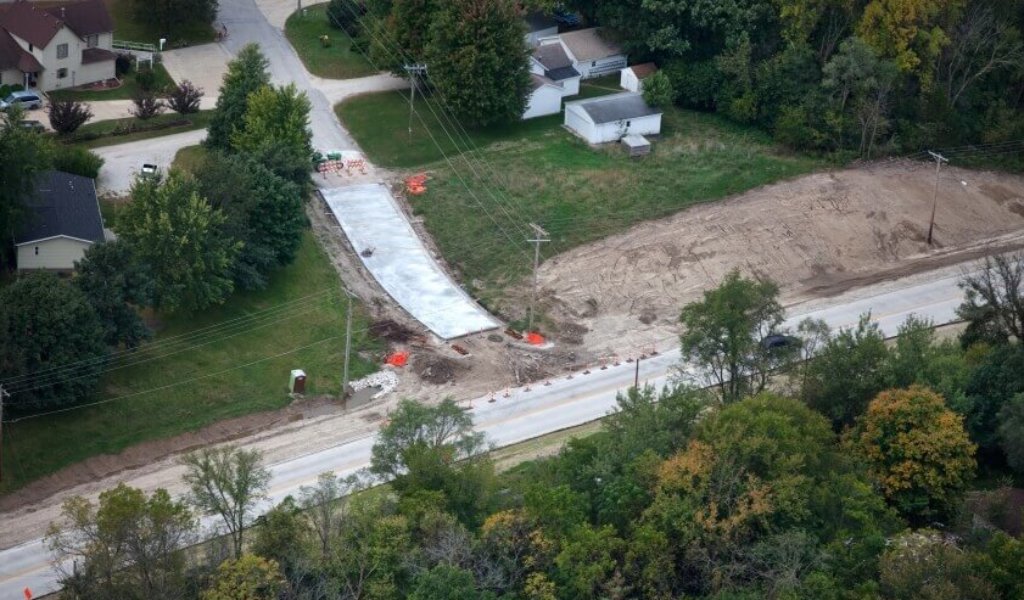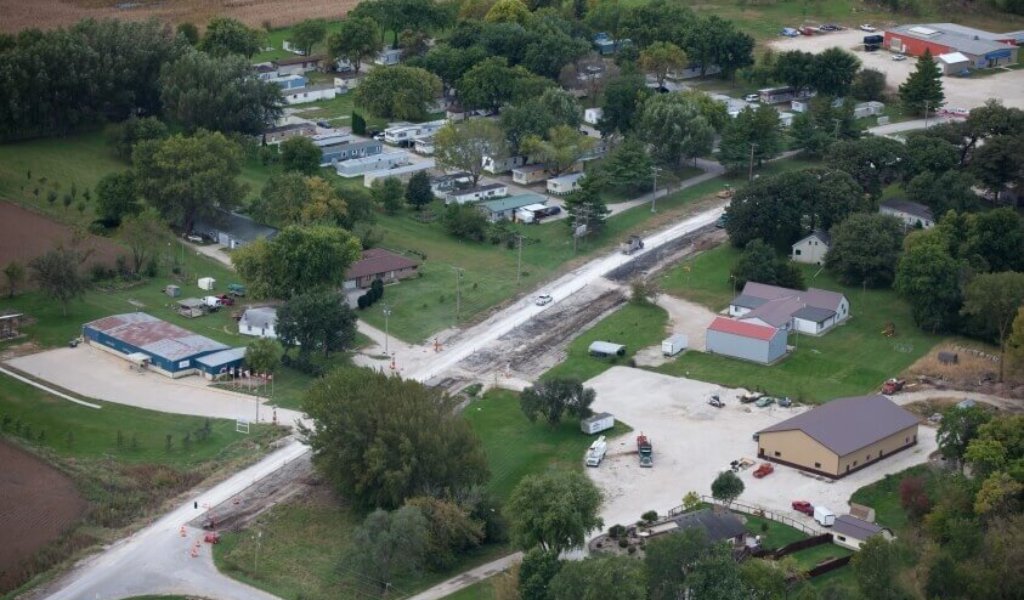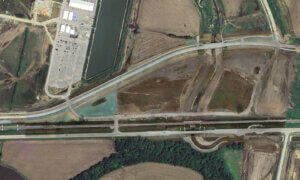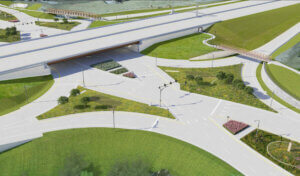
Heavily-Trafficked Corridor Receives Much-Needed Improvements
Initially constructed in 1930, U.S. Highway 20 (now known as East Second Street), is a busy two-lane roadway that stretches through Webster City. With the pavement extending to the east of Lyons Creek in need of replacement, Webster City contracted Snyder & Associates to lead improvement efforts. Our firm was also tasked with improving the roadway geometry and updating the clear zone area to meet current design standards. Additionally, an 8′-wide sidewalk was needed along the corridor to increase pedestrian and bicyclist safety.
The key design and construction considerations were focused on right-of-way (ROW) access and the need to maintain traffic flow during the reconstruction process. To avoid any new acquisitions and streamline the environmental permitting process, the city requested that construction be confined to the existing ROW. Further, four commercial businesses, a mobile home community, a public dog park, a cultural center, 15 residential driveways, and multiple industries just to the east of the project corridor that employs several hundred people required that the roadway remain open to traffic at all times.
Iowa’s First Use of Temporary Driveway Assistance Devices
Snyder & Associates reviewed several alternatives for temporary lanes to maintain two-way traffic. All were deemed too expensive or would require additional grading outside of the existing ROW. The use of temporary signals, pilot cars, and flaggers was also considered. However, these options would reduce the project into smaller segments, take longer to complete, and be more expensive.
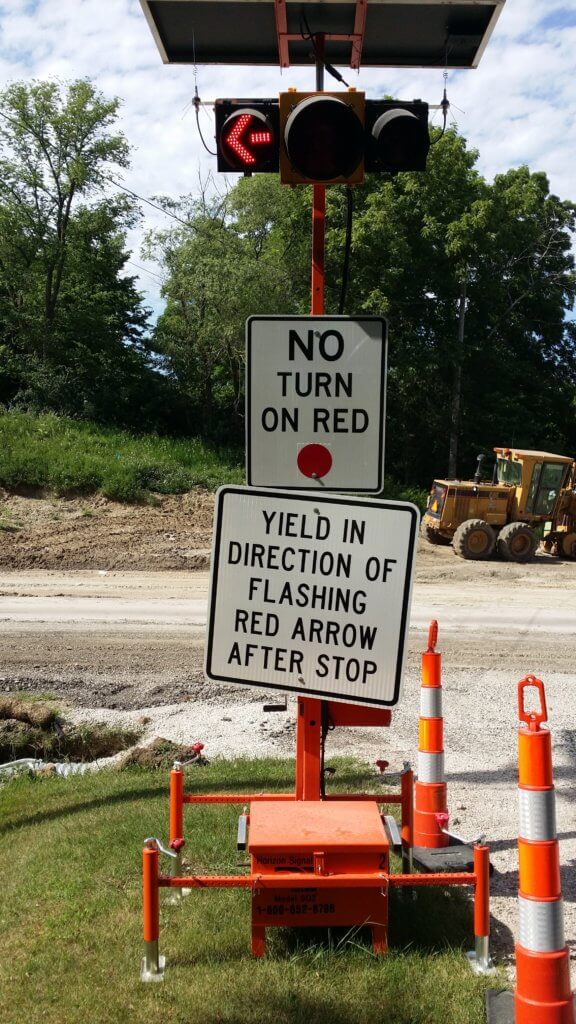
Syncing with portable traffic signals, the Driveway Assistance Device (DAD) communicates to motorists when it is safe to enter a one-lane work zone from a driveway or side street.
Greg Karssen, PE, with Snyder & Associates researched an innovative, temporary traffic signal solution. When placed at each driveway entrance within the corridor, these portable signals can be synchronized with mainline, temporary road signals to properly route driveway and side street traffic with the mainline traffic. When a driver exits a business or residence, the temporary driveway signal is activated and the proper direction of travel is selected. The green cycle of the temporary mainline signal is then activated to merge driveway traffic into mainline traffic. The temporary signals use radar detection to facilitate traffic flow and are programmed to adjust the timing of the green cycle based on traffic volume.
The use of these temporary signals allows one-lane, two-way traffic through the work zone and prevents the need to construct a temporary pavement platform or use pilot cars or flaggers. An added benefit of this method is the distance between mainline signals is increased. This lengthens the work segments which allows work to be completed more efficiently with fewer stages.
The Iowa DOT had long been interested in using temporary signals to manage traffic access from residential and business driveways. The East Second Street project was the first in the state of Iowa suited for the implementation of individual, temporary traffic signals to direct the flow of traffic for property owners.
Clean Water & Sanitary Sewer Issues Resolved
Snyder & Associates also investigated issues concerning the existing water main within the project corridor. This main had experienced 16 breaks in a 13 year period. It was discovered that corrosive soils within the project corridor were contributing to the water main breaks. The replacement and relocation of the water main to an area outside of the new paving and storm sewer area were included with the project.
Also, the sanitary sewer along the corridor was found to have a several hundred foot-long stretch with inadequate slope. Sewage flow was slowed in this section, allowing the water to cool. This caused fats from two meat processing plants located upstream to coagulate and clog the line. As a result, thousands of dollars per year were spent to remove clogs. To improve flow and reduce maintenance costs, the sanitary sewer was replaced and the slope was increased.
